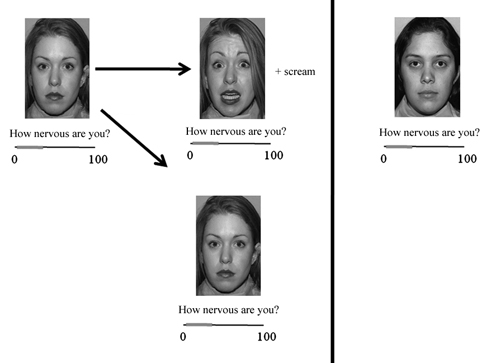Archived Content
The National Institute of Mental Health archives materials that are over 4 years old and no longer being updated. The content on this page is provided for historical reference purposes only and may not reflect current knowledge or information.
Teen Brain Less Discerning of Threat vs. Safety, More Vulnerable to Stress
• Science Update
Teen brains rely on early-maturing brain structures that process fear differently than adult brains, according to an NIMH-funded study. As a result, teens may have more difficulty than adults in differentiating between danger and safety, leading to more pervasive stress and anxiety. The study was published online ahead of print on February 23, 2011, in the Proceedings of the National Academy of Sciences.
Background
Things that frighten children or teens generally no longer frighten them as adults. So how does the adult brain distinguish between danger and safety, and what does the developing brain do differently?
To explore these questions, Jennifer Lau, Ph.D., of Oxford University (formerly at NIMH), and colleagues compared the brain activity of healthy youth with healthy adults during a threat learning task. In this task, participants were shown a series of photos that showed:
- A person with a neutral expression at first, then a fearful expression paired with a loud scream; or, in some later photos, the same person with a neutral expression only (threat stimulus)
- A different person with a neutral expression only (safety stimulus)
Immediately after each photo, participants rated how afraid they felt.
Results of the Study
Both adults and teens reported feeling more afraid of the threat stimulus than the safety stimulus. Compared to adults, teens were less able to differentiate the threat from the safety stimulus.
Using functional magnetic resonance imaging, the researchers found that teens also had more activity in the hippocampus and right side of the amygdala than adults when viewing the threat stimulus compared with the safety stimulus. The hippocampus helps create and file new memories, while the amygdala activates the "fight-or-flight" response to stress and may be involved in fear learning.
Activity in another brain structure, the late-maturing dorsolateral prefrontal cortex (DLPFC), also differed between adults and teens. The DLPFC is highly involved in categorizing objects into different groups. In adults, activity increased as they rated more fear in relation to the safety stimulus. The researchers noted that this finding suggests that the adults' brains recruited the DLPFC more when they were unsure if a stimulus was safe or not safe. This uncertainty was reflected in their fear ratings.
Significance
The findings suggest that teen brains rely primarily on the hippocampus and right amygdala, brain structures that mature earlier in development and which are responsible for basic fear responses. In contrast, adults show more focused brain activity in prefrontal regions, which mature later in development. These regions are also involved in making more reasoned judgments about what is actually dangerous from what is safe.
According to the researchers, this difference may help to explain why teens generally report more pervasive worries and are more vulnerable to stress-related problems.
What's Next
To better understand the transitions in fear learning over time, future research should include large, longer-term studies of similarly aged teens and follow them into adulthood.

Reference
Lau JY, Britton JC, Nelson EE, Angold A, Ernst M, Goldwin M, Grillon C, Leibenluft E, Lissek S, Norcross M, Shiffrin N, Pine DS. Distinct neural signatures of threat learning in adolescents and adults . Proc Natl Acad Sci U S A. 2011 Mar 15;108(11):4500-5. Epub 2011 Feb 23. PubMed PMID: 21368210; PubMed Central PMCID: PMC3060221.
